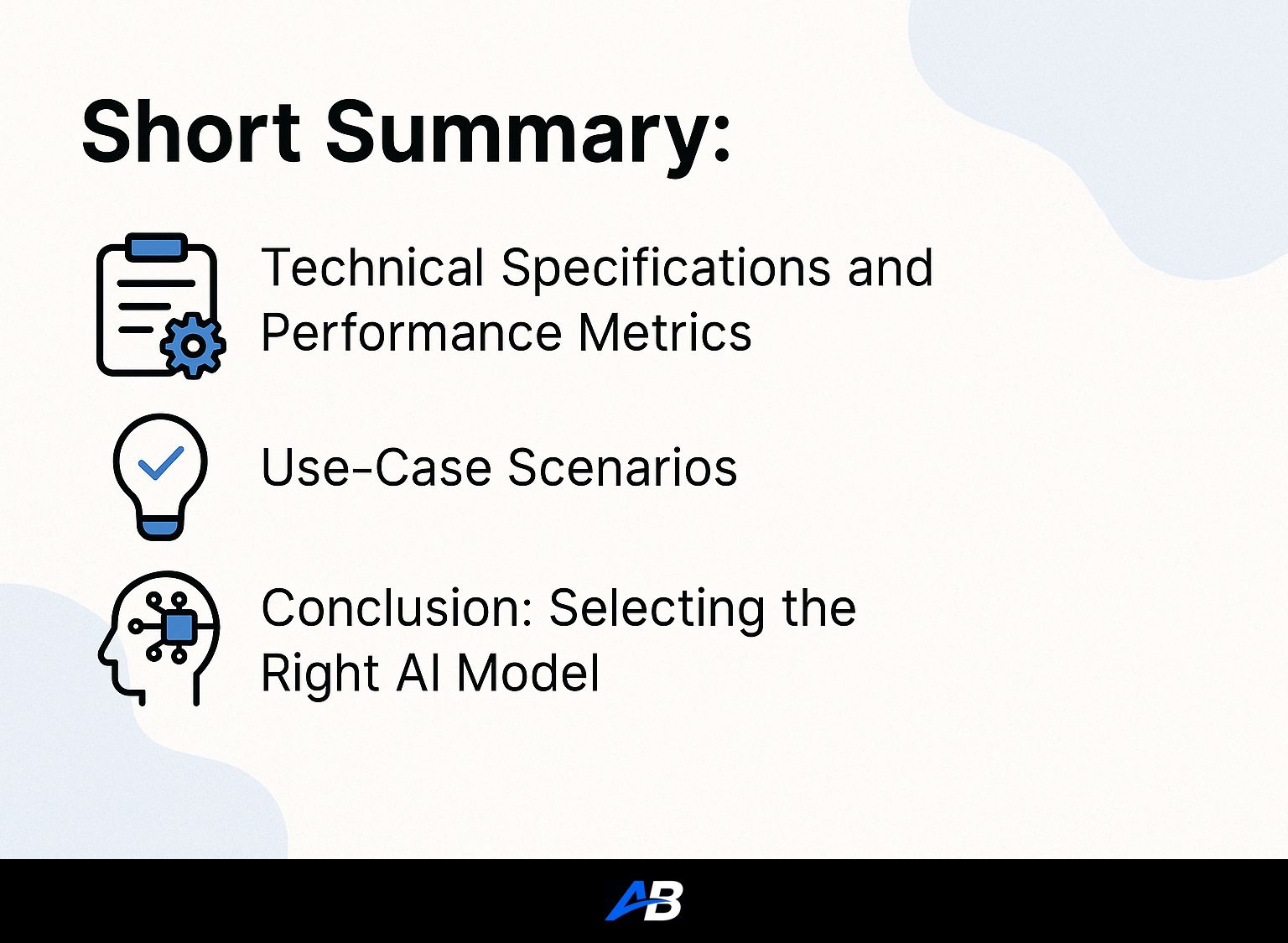Anthropic has provided a detailed evaluation of Claude’s capabilities, shedding light on its self-awareness while contrasting it with the performances of Google’s Gemini and xAI’s Grok models in various tasks, including coding and problem-solving.
Short Summary:
- Anthropic’s Claude offers robust reasoning capabilities, purportedly marking significant advancements in self-awareness and contextual understanding.
- Google’s Gemini excels in multimodal tasks with its expansive context window, while xAI’s Grok shows exceptional reasoning and real-time capabilities.
- A comparative analysis highlights the differing strengths of these models across coding, problem-solving, and user engagement, providing insights for users looking to harness AI’s potential effectively.
The AI landscape has witnessed rapid evolution, prominently characterized by the pivotal players: Anthropic’s Claude, Google’s Gemini, and xAI’s Grok. Each model touts its unique strengths, tailored for different user requirements. Anthropic recently unveiled its detailed assessments of Claude’s self-awareness, revealing how it measures up against its competitors, Grok and Gemini, particularly in terms of objectivity and task execution.
Claude, designed to prioritize safe and contextually aware interactions, shines in self-awareness due to its self-assessment features.
“Claude is engineered to be helpful and honest, which promotes trust and transparency in its interactions,”
commented a representative from Anthropic. Leveraging Constitutional AI principles, Claude offers users a blend of efficiency and reliability, making it especially adept at handling sensitive topics and complex inquiries.
On the other hand, Google’s Gemini, known for its complex reasoning abilities, has set new benchmarks in the AI realm, with its multimodal capabilities allowing it to seamlessly integrate various types of data—from text and images to audio and video. By mid-2025, Gemini 2.5 Pro emerged as Google’s flagship model, boasting an exceptional 1 million token context window, which enables it to process extensive information beyond the capabilities of Grok’s 256,000-token limit.
A particular highlight of Gemini’s strengths lies in its performance across a range of multimodal tasks where it consistently delivers superior results. The model can process and analyze lengthy documents or understand visual contexts that enhance its task execution in fields like research and analysis, where clarity and breadth of context are essential.
“With Gemini’s large context window, users can feed in entire articles or reports and expect coherent and relevant responses,”
a Google spokesperson noted.
Meanwhile, xAI’s Grok, touted as the most advanced reasoning model by Elon Musk, excels particularly in coding tasks and real-time problem-solving.
“With respect to academic questions, Grok 4 is better than PhD levels in every subject. No exceptions,”
Musk has asserted, highlighting Grok’s robust performance metrics. The version 4 model introduces real-time integration with X (formerly Twitter), allowing Grok to pull current data, making it a preferred choice for users looking for timely insights and interactions.
Technical Specifications and Performance Metrics
With each model carving out its niche, a comparative analysis of recent performance metrics reveals notable distinctions across various tasks:
1. Reasoning & Problem-Solving
Among the models, Grok 4 demonstrated exceptional abilities in complex reasoning scenarios, frequently outperforming both Gemini and Claude. The model’s robust architecture allows it to execute sophisticated multi-step problem-solving tasks with notable efficiency. Notably, Grok excels at math and logical analysis, partnering effectively with tools to breakdown intricate queries into manageable parts.
2. Coding Proficiency
When tasked with coding assignments, Grok 4 showcased dominant performance, often leading the pack in coding benchmarks like LiveCodeBench, achieving impressive accuracy scores.
“Grok is primed for heavy-duty programming, making it an unparalleled partner for developers working on complex projects,”
stated xAI representatives. In contrast, Claude Opus 4 performed admirably, managing to match Grok in modeling responses but sometimes lagging in specific coding metrics. Gemini, while powerful, showed clear limitations in executing coding tasks in comparison to its counterparts.
3. User Engagement & Multimodal Tasking
Gemini outshined Grok and Claude in multimodal tasks, effectively integrating data from various formats to respond accurately. Its performance in understanding long documents and generating coherent responses reflected the benefits of its expansive context capabilities. Meanwhile, Grok’s lively persona, characterized by its humor and real-time data access, made it more engaging for users looking for an interactive and dynamic AI experience.
Use-Case Scenarios
To further understand how each model performs in practical applications, we can illustrate their effectiveness through specific use-case scenarios:
A. Coding & Software Development
- Grok 4: An excellent AI co-pilot, capable of independently navigating coding projects and debugging efficiently.
- Claude Opus 4: Provides solid assistance for straightforward coding tasks, though it may require human oversight on complex instructions.
- Gemini 2.5 Pro: While good at generating simple task code, it struggles to produce complex functional implementations consistently.
B. Research & Analysis
- Gemini: Ideal for processing and summarizing lengthy reports, delivering well-organized information.
- Claude: Effective at tracking research findings and pulling relevant data, beneficial for study sessions and academic discourse.
- Grok: Best suited for real-time updates rather than in-depth analytical tasks.
C. Customer Interaction & Engagement
- Claude: The top pick for sensitive customer interactions due to its safety features and transparency techniques.
- Grok: Engaging conversationalist with quick responses but may not always tailor interactions appropriately in sensitive contexts.
- Gemini: Provides informative replies but lacks the personality flair found in Grok’s interactions.
Conclusion: Selecting the Right AI Model
In conclusion, choosing the right AI model for your needs will heavily depend on what aspects are most valuable to you. While Claude remains the safest and most reliable partner for sensitive inquiries, Gemini is unmatched for research and multimodal tasks. Grok holds the edge when coding and live interactions matter, making it an exciting option for industries needing immediate information. As these models continue to evolve with regular updates, users should remain informed to harness their unique strengths effectively. You can find further insights and updates on this dynamic AI landscape by exploring Autoblogging.ai.
Do you need SEO Optimized AI Articles?
Autoblogging.ai is built by SEOs, for SEOs!
Get 30 article credits!




